Captiva Island, located on the Gulf of Mexico in Florida, features some of the most diverse bird populations in the region. With its lush mangrove forests, shallow bays, and pristine beaches, the island offers a variety of habitats that attract a wide range of avian species.
From the majestic Bald Eagles soaring high above the island to the tiny Piping Plovers running along the surf line, Captiva Island is a birdwatcher’s paradise.
Whether you’re a seasoned birdwatcher or just starting out, there’s no better place to observe Florida’s iconic feathered friends in their natural habitat than on the beautiful shores of Captiva Island.
1. American White Pelican
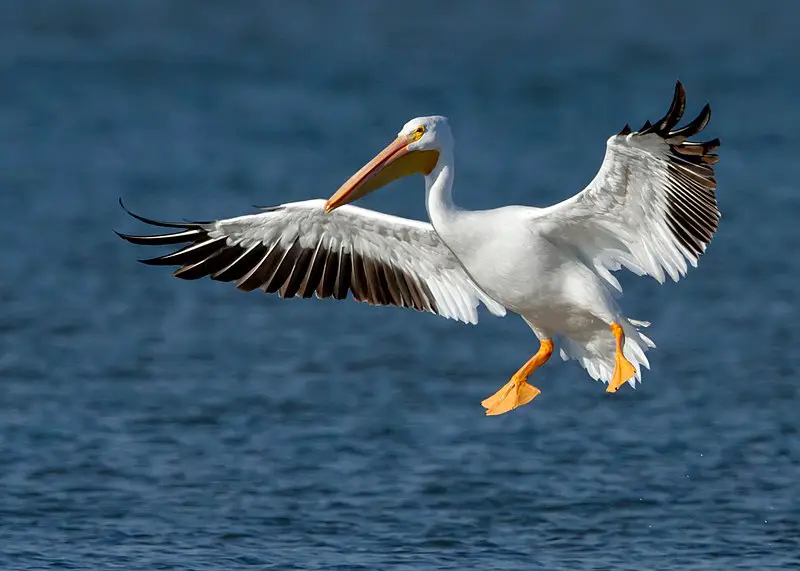
The American White Pelican is a majestic bird from the Pelecaniformes order, known for its impressive size and ability to soar gracefully in the sky.
It breeds during summer months in North America and migrates southwards towards Central and South America during winter.
The species was first described by German naturalist Johann Friedrich Gmelin back in 1789 as part of his updated version of Carl Linnaeus’ work.
This large aquatic bird has an all-white plumage with black primary flight feathers on its wings, while its beak features a characteristic yellowish colouration at the base near the face.
Its diet mainly consists of fish which it typically catches after dipping into water using its long bill; yet sometimes they can be seen stealing food items from other birds such as cormorants or gulls.Scientific classification:
| Kingdom | Animalia |
| Phylum | Chordata |
| Class | Aves |
| Order | Pelecaniformes |
| Family | Pelecanidae |
| Genus | Pelecanus |
| Species | P. erythrorhynchos |
Also Featured In: Most Popular Bird Species in North America, Birds Live in Arkansas
2. Osprey

The Osprey is a majestic bird of prey with an incredibly wide habitat range. It has distinctive brown upperparts and greyish head and underparts, making it easily identifiable in the skies above many regions across the world.
With a wingspan of up to 180cm (71in) and body length reaching 60cm (24in), this large raptor specializes in hunting for fish, soaring high over rivers as well as coasts searching for its next meal.
Despite living near water sources, they can also be found inhabiting mountainsides or even woodlands, proving their incredible adaptability. An impressive species that truly deserves admiration.Scientific classification:
| Kingdom | Animalia |
| Phylum | Chordata |
| Class | Aves |
| Order | Accipitriformes |
| Family | Pandionidae |
| Genus | Pandion |
| Species | P. haliaetus |
Also Featured In: Ukrainian Birds You Should Know, Birds of Sweden
3. Cuckoos
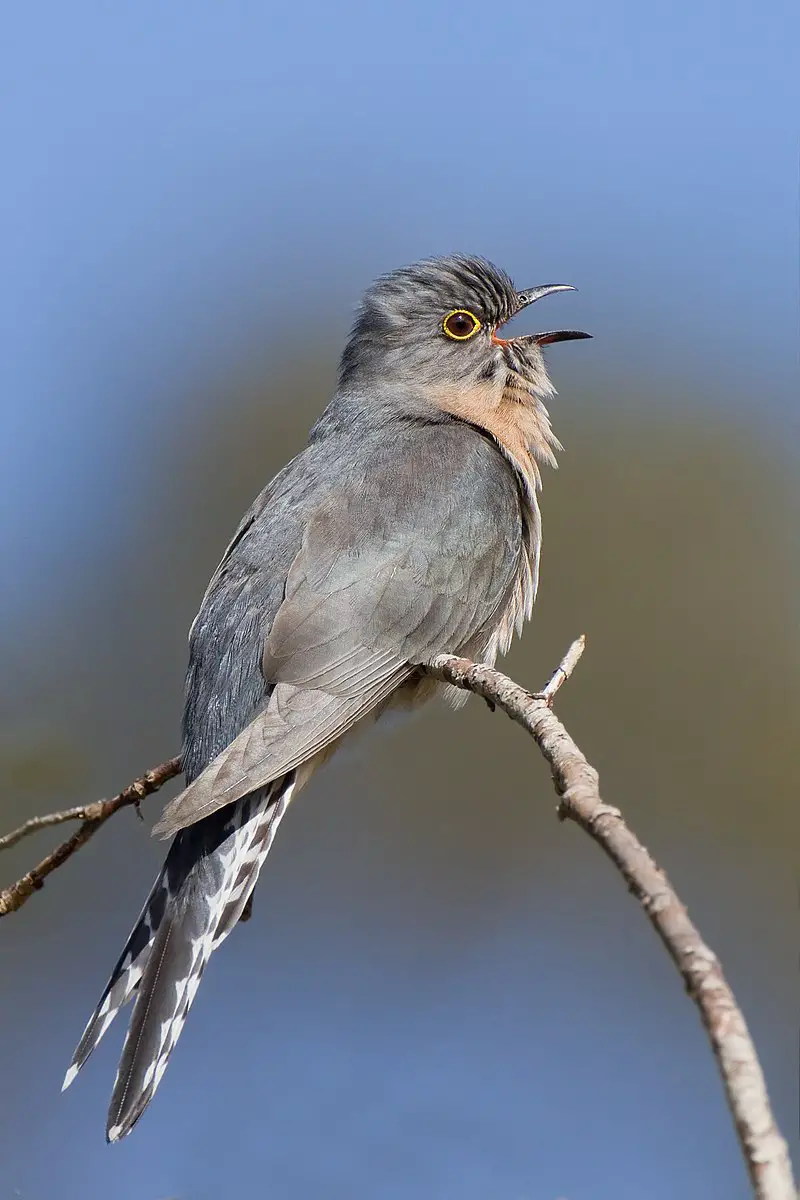
Cuckoos are fascinating birds belonging to the Cuculidae family, which is the only taxon in the order of Cuculiformes.
There are many different species within this family such as common or European cuckoo, roadrunners, koels, malkohas, couas and anis.
Some of these species may even be identified as separate families – Centropodidae and Crotophagidae respectively.
These birds have been known for their unique features such as loud calls heard consistently during certain times of day and night.
They also exhibit behavior like brood parasitism where they lay eggs in other nests so that their chicks can get more food from host parents than its own.
All these traits make them one-of-a-kind creatures worth admiring.Scientific classification:
| Kingdom | Animalia |
| Phylum | Chordata |
| Class | Aves |
| Clade | Otidimorphae |
| Order | Cuculiformes Wagler, 1830 |
| Family | Cuculidae Leach, 1820 |
Also Featured In: Most Common Types of Bangladeshi Birds, Birds You’ll Find in Moldova
4. Herons
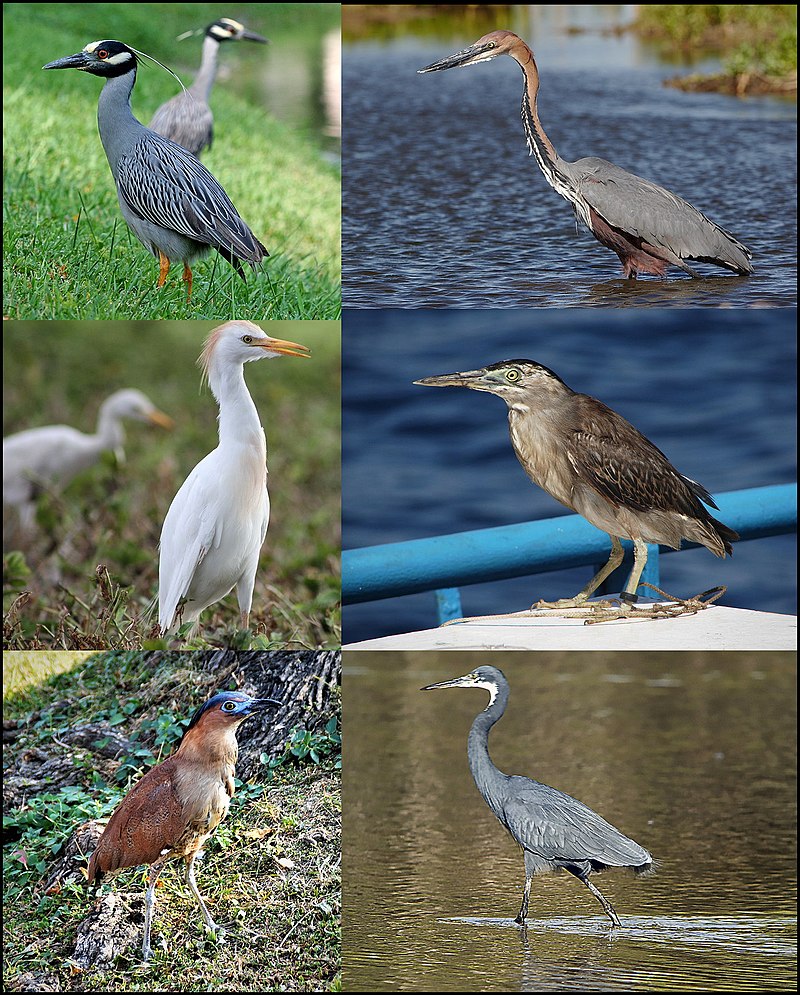
Herons are graceful and elegant birds belonging to the family Ardeidae, with 72 distinct species.
They have long legs and necks that are well-adapted for wading in shallow water like streams or ponds.
Herons can be found near freshwaters as well as along coastal areas worldwide.
Some of these species may also be referred to as egrets, bitterns or zigzag heron/bittern because they belong to certain genera such as Botaurus and Ixobrychus respectively.
These birds stand tall when searching for food by standing still in a shallow body of water while waiting patiently until prey appears before quickly capturing it with their sharp bills.Scientific classification:
| Kingdom | Animalia |
| Phylum | Chordata |
| Class | Aves |
| Order | Pelecaniformes |
| Suborder | Ardei |
| Family | Ardeidae Leach, 1820 |
Also Featured In: Famous Paintings Birds, Most Common Lake Birds
5. American White Ibis
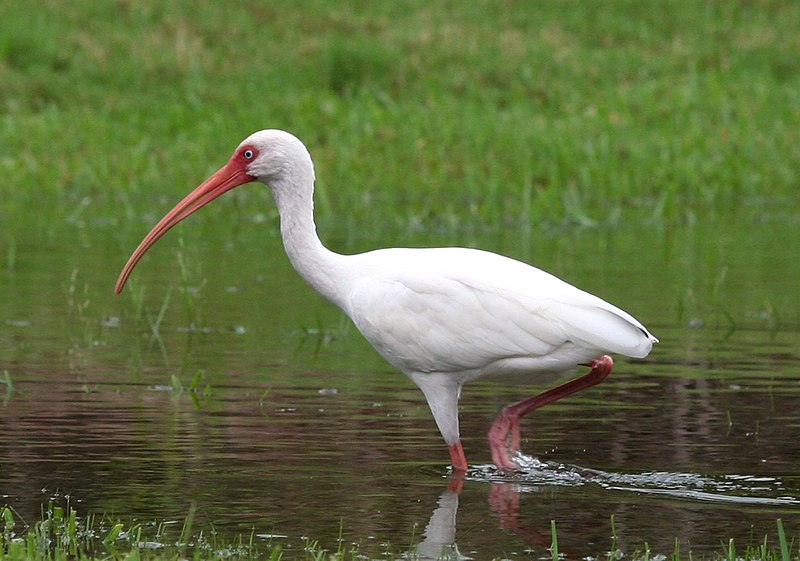
The American white ibis is a medium-sized bird with an overall white plumage and long legs. It has a bright red-orange downward curved bill, and black wing tips that are usually only visible in flight.
This species of ibis can be found from Virginia south through most of the coastal New World tropics.
They have been known to inhabit marshes, swamps, ponds, lakeshores as well as mangrove forests near water sources where they feed on crustaceans such as crabs and shrimp among other aquatic animals like insects or snails.
The American white ibis plays an important role in its ecosystem by helping to control insect populations which helps maintain balance within these environments.Scientific classification:
| Kingdom | Animalia |
| Phylum | Chordata |
| Class | Aves |
| Order | Pelecaniformes |
| Family | Threskiornithidae |
| Genus | Eudocimus |
| Species | E. albus |
Also Featured In: Top Birds Found in Mexico, Birds You’ll Find in South Texas
6. Reddish Egret
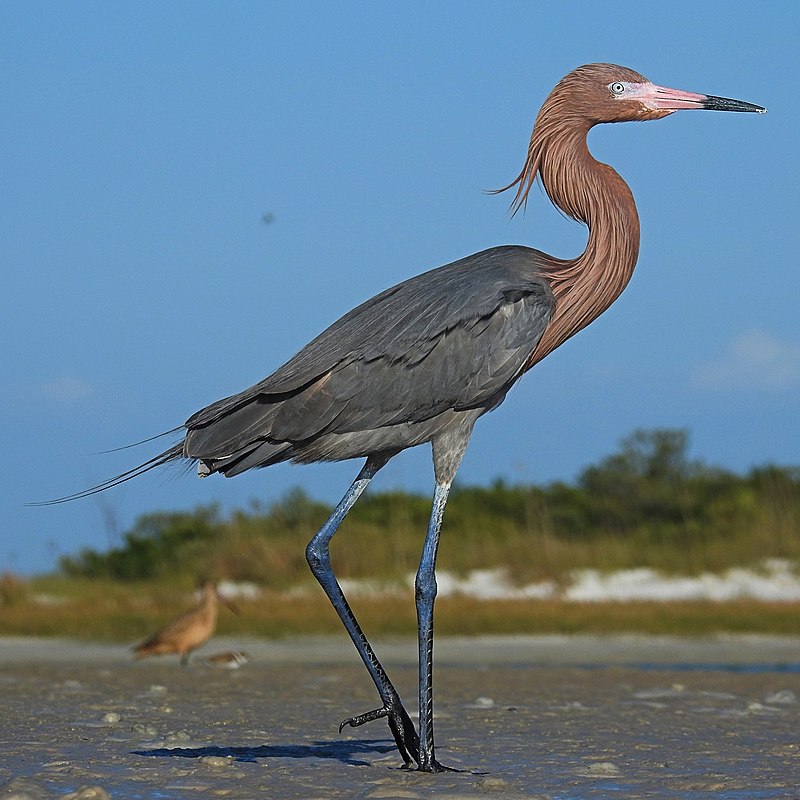
The Reddish Egret is a medium-sized heron that breeds in Central America, The Bahamas, the Caribbean, Texas and Mexico.
It prefers mud flats as its habitat of choice due to its unique foraging behaviour which differs from other herons.
In the past it was hunted widely for its feathers used to make fashionable hats but thankfully this practice has now been stopped.
They have white or grey plumage with pink legs and bill giving them their name.
These birds feed mainly on fish which they catch by making quick darting movements in shallow water or running rapidly through shallows stirring up prey so they can snatch them easily with their bills.
Their long wings enable them to fly quickly when hunting and also during migration season when many travel southwards towards warmer climates.Scientific classification:
| Kingdom | Animalia |
| Phylum | Chordata |
| Class | Aves |
| Order | Pelecaniformes |
| Family | Ardeidae |
| Genus | Egretta |
| Species | E. rufescens |
Also Featured In: Birds that Live around Southwest Florida, Birds You’ll Find in the Rio Grande Valley
7. Great Egret
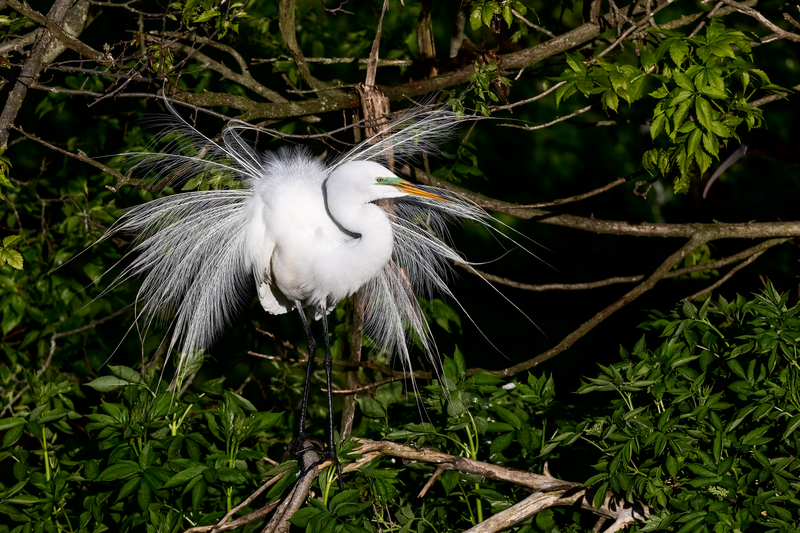
The Great Egret is a large, white bird found in many regions of the world. It has four subspecies that reside across Asia, Africa, Americas and southern Europe.
This species usually lives near bodies of water such as lakes and marshes. They are also now starting to spread into more northern areas of Europe due to climate change.
These birds have long yellow legs with an impressive wingspan for their size which allows them to soar majestically through the sky hunting for fish or amphibians in shallow waters below.
Their feathers have been used historically by Native Americans as part of traditional garments or ceremonies but this practice should be avoided today so these amazing creatures can thrive without harm from humans.Scientific classification:
| Kingdom | Animalia |
| Phylum | Chordata |
| Class | Aves |
| Order | Pelecaniformes |
| Family | Ardeidae |
| Genus | Ardea |
| Species | A. alba |
Also Featured In: Most common Birds in France, Most Common Romanian Birds
8. Spoonbills
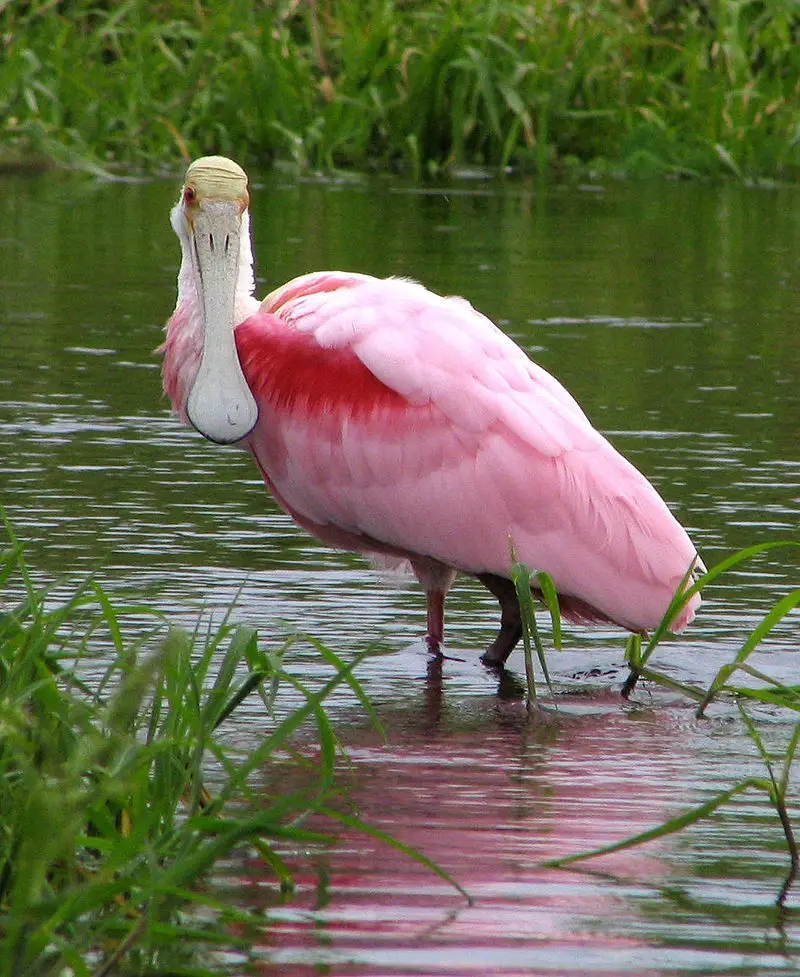
Spoonbills are large wading birds belonging to the genus Platalea. Characterized by their long legs and distinctive spoon-shaped beaks, these birds can be found all over the world except Antarctica.
The name of this genus derives from Ancient Greek meaning “broad”, referring to their bill’s shape.
There are six species of Spoonbill recognized – though they usually form a single group, sometimes it is divided into three genera.
These graceful creatures feed mainly on small aquatic organisms such as insects and fish which they catch with an open-mouth technique while sweeping through shallow waters in search for food.
They typically breed near water bodies during springtime when there’s plenty of food available around them.Scientific classification:
| Kingdom | Animalia |
| Phylum | Chordata |
| Class | Aves |
| Order | Pelecaniformes |
| Family | Threskiornithidae |
| Subfamily | Plataleinae |
| Genus | Platalea Linnaeus, 1758 |
Also Featured In: Birds of South African, Birds Found in Hungary
9. Great Blue Heron
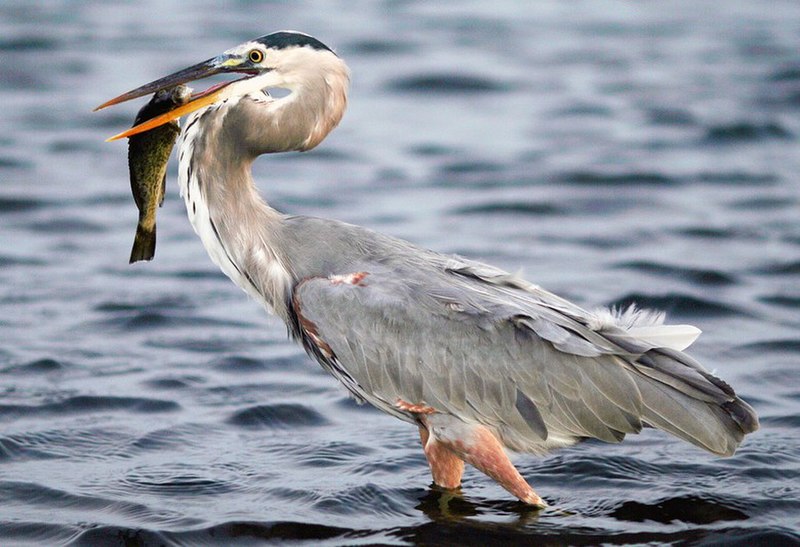
The Great Blue Heron is a majestic wading bird found in many parts of North America, Central America, the Caribbean and even as far away as the Galapagos Islands.
It has an impressive wingspan which can reach up to six feet wide. Its feathers are mainly bluish-gray with brownish streaks on both its neck and chest while its head displays white plumes.
The adult herons can also be identified by their yellow bill and legs.
They live near bodies of water such as lakes, marshes or rivers where they feed on fish using a spear like motion with their sharp bills.
An all-white population exists only in south Florida and the Florida Keys making it quite unique.Scientific classification:
| Kingdom | Animalia |
| Phylum | Chordata |
| Class | Aves |
| Order | Pelecaniformes |
| Family | Ardeidae |
| Genus | Ardea |
| Species | A. herodias |
Also Featured In: Common Birds in Canada, Birds that Live in the Deserts
10. Pelican
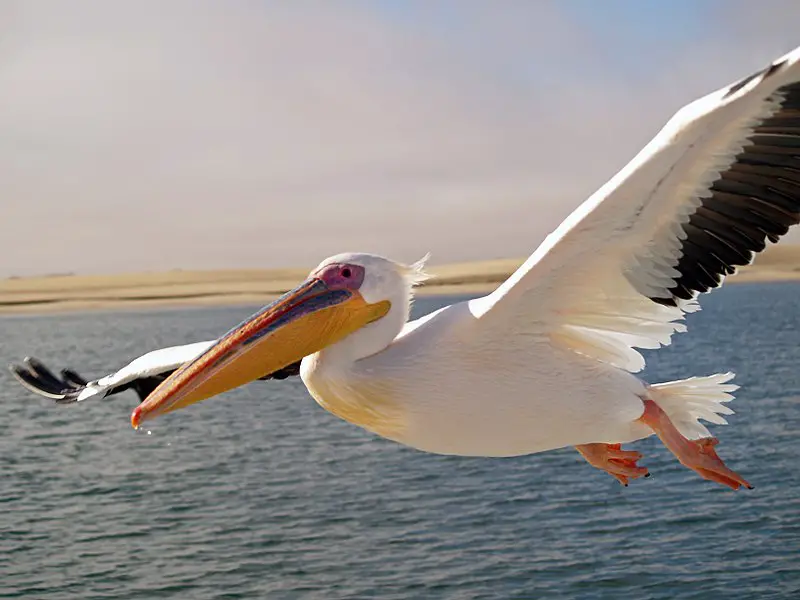
Pelicans are a large water bird and form part of the family Pelecanidae. They have long beaks, allowing them to scoop up prey from both land and sea with ease.
Their most distinctive feature is their huge throat pouch which they use to drain water before swallowing their food.
Most pelican species have predominantly pale plumage however exceptions such as the brown and Peruvian pelicans exhibit darker colouring.
The bill, face skin and pouch of all Pelican species become brightly coloured during breeding season in order to attract mates.
Pelicans can often live up to 25 years due to the fact that they eat mostly fish which provides them with enough nutrients for longevity.Scientific classification:
| Kingdom | Animalia |
| Phylum | Chordata |
| Class | Aves |
| Order | Pelecaniformes |
| Family | Pelecanidae |
| Genus | Pelecanus Linnaeus, 1758 |
Also Featured In: Most common birds in Australia, Flight Birds You Should Know
11. Frigatebird
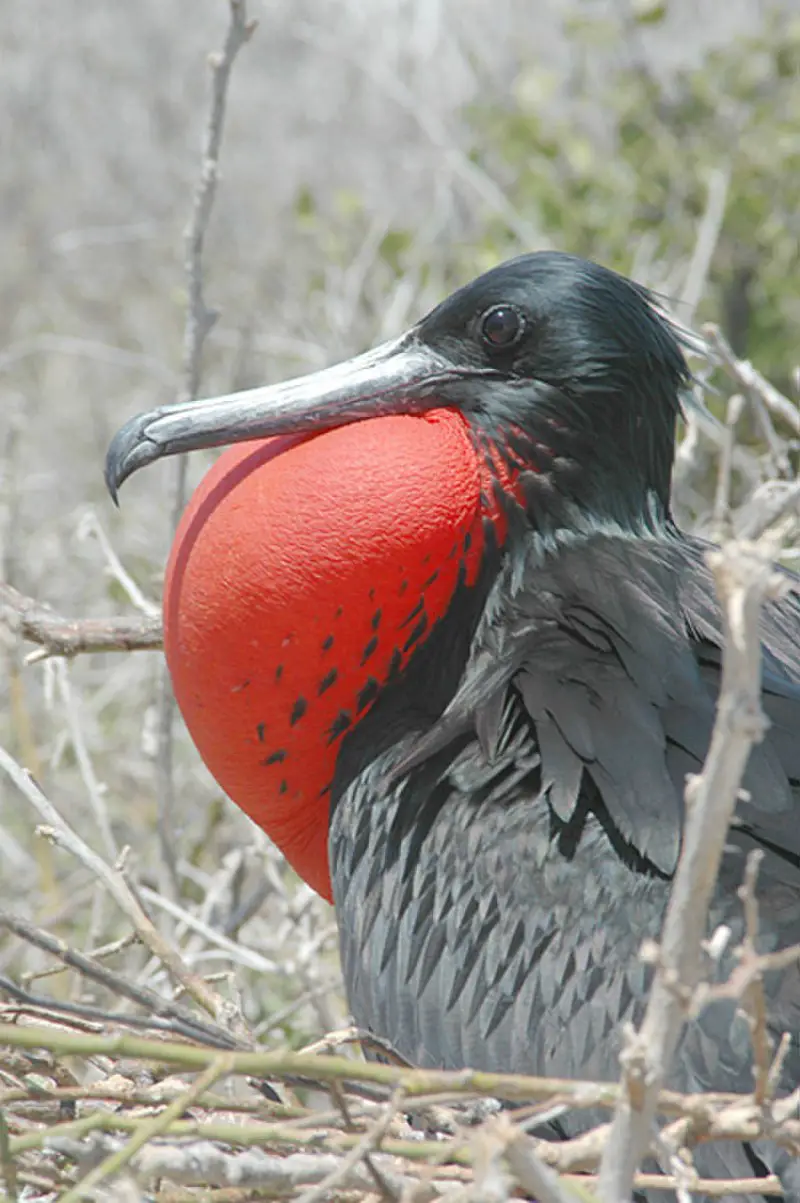
Frigatebirds are a beautiful and mysterious family of seabirds, found in all tropical and subtropical oceans. The five extant species have glossy black plumage, long forked tails, and lengthy hooked bills.
During the breeding season males display a bright red gular pouch which they inflate to attract mates. Females have white underbellies year-round giving them an elegant contrast against their darker feathers.
They spend most of their lives soaring with minimal effort over warm ocean waters seeking food such as fish or squid taken from the surface or plucked out of midair by other birds.
Frigatebirds often nest on isolated islands due to lack of predators yet still manage to travel incredibly large distances between feeding grounds every day making them truly remarkable creatures.Scientific classification:
| Kingdom | Animalia |
| Phylum | Chordata |
| Class | Aves |
| Order | Suliformes |
| Family | Fregatidae Degland & Gerbe, 1867 |
| Genus | Fregata Lacépède, 1799 |
Also Featured In: Birds of Ecuador, Flocks Birds around Us
12. Grey Plover
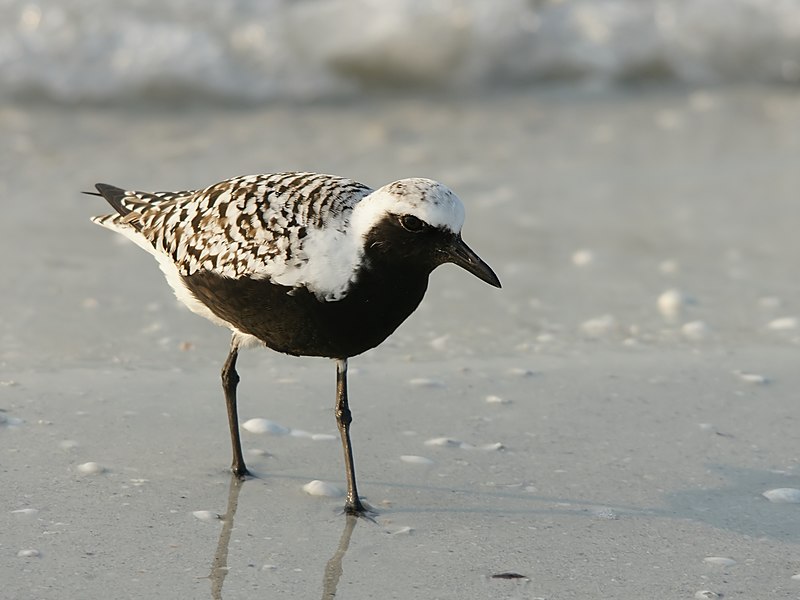
The Grey Plover is a large plover bird which breeds in the Arctic regions. It then migrates over long distances, and can be found on coastlines around the world when not breeding.
The species was first described by Swedish naturalist Carl Linnaeus in 1758 under its binomial name “Tringa squatarola”.
In addition to being known as grey plovers or black-bellied plovers, they are also sometimes referred to as “black-breasted lapwings” due to their distinctive plumage that features white underneath with dark greys above.
These birds inhabit beaches, mudflats and saltmarshes where they feed mainly on small invertebrates such as worms and insects.Scientific classification:
| Kingdom | Animalia |
| Phylum | Chordata |
| Class | Aves |
| Order | Charadriiformes |
| Family | Charadriidae |
| Genus | Pluvialis |
| Species | P. squatarola |
Also Featured In: Birds of Netherlands, Tundra Birds
13. Black-Crowned Night Heron
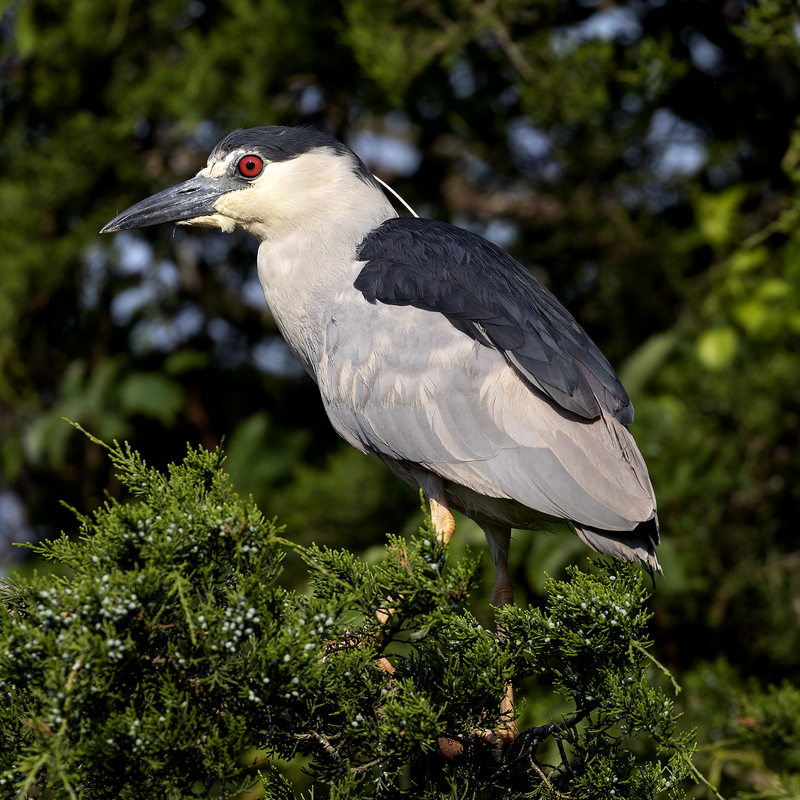
The Black-crowned night heron (Nycticorax nycticorax) is a medium-sized bird found in various parts of the world, including Europe, Asia and North and South America.
It has black crowns on its head with white feathers underneath. Its wings are greyish brown while its underparts are mostly white.
This species can be seen foraging near shallow water or along coastlines during dusk or dawn as it hunts small fish, amphibians and crustaceans.
They also feed on insects such as grasshoppers and beetles which they find in meadows close to freshwater bodies like lakes or ponds where they breed during springtime making nests using twigs lined with reeds and leaves near these waterside habitats.
In Australasia, this species hybridizes with the nankeen night heron that inhabits those areas instead; however both populations remain distinct from each other despite their overlap range regions.Scientific classification:
| Kingdom | Animalia |
| Phylum | Chordata |
| Class | Aves |
| Order | Pelecaniformes |
| Family | Ardeidae |
| Genus | Nycticorax |
| Species | N. nycticorax |
Also Featured In: Common Birds Found in Switzerland, Birds of Kauai, Hawaii
14. Roseate Spoonbill
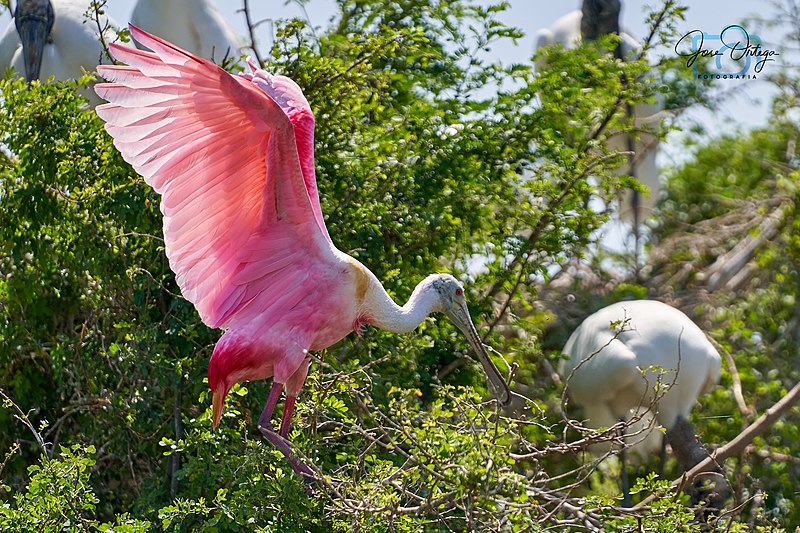
The Roseate Spoonbill is a beautiful and majestic bird found in both North and South America.
It belongs to the ibis family, Threskiornithidae, and its vibrant pink colour comes from canthaxanthin pigment derived from their diet of crustaceans like shrimp.
Sadly plume hunting has almost driven this species close to extinction during the 18th and 19th centuries but fortunately it’s making a comeback due to conservation efforts made by dedicated wildlife organisations.
Its large spoon-like bill helps them filter out food sources such as small fish or frogs from shallow water areas while they wade through mudflats with their long legs looking for something tasty.
With its unique appearance, graceful wingspan amd impressive flight capabilities, the Roseate Spoonbill is an incredibly photogenic animal that will captivate any viewers attention who happen to be lucky enough witness it in all its glory.Scientific classification:
| Kingdom | Animalia |
| Phylum | Chordata |
| Class | Aves |
| Order | Pelecaniformes |
| Family | Threskiornithidae |
| Genus | Platalea |
| Species | P. ajaja |
Also Featured In: Costa Rica Birds, Birds You’ll Find in Zoo
15. Snowy Egret
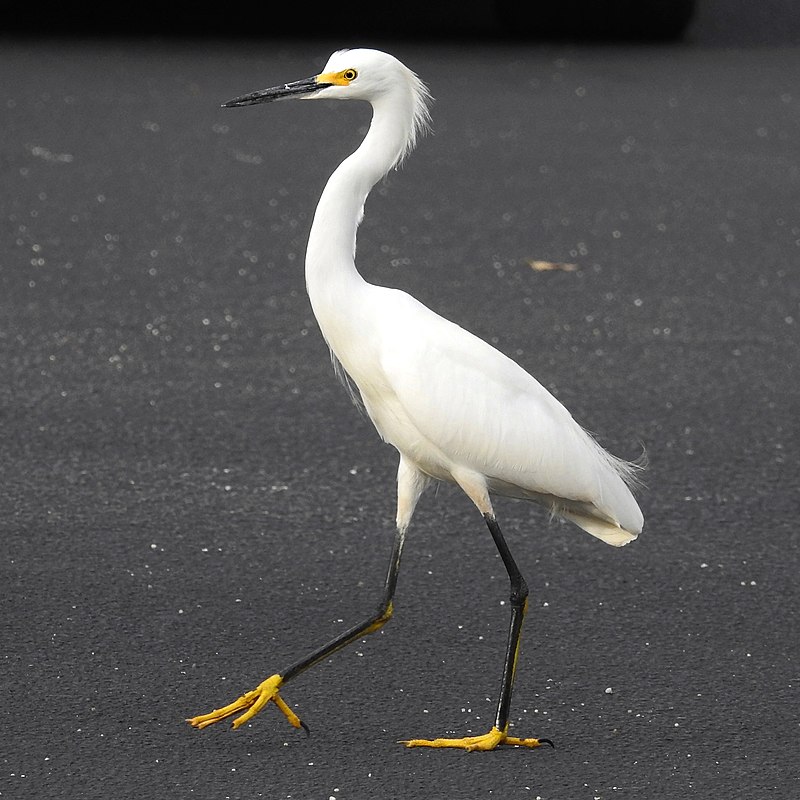
The Snowy Egret is a small white heron native to North America. Its scientific name, Egretta thula, comes from Provençal French for the little egret and an incorrect reference to the Black-necked Swan by Chilean naturalist Juan Ignacio Molina in 1782.
This beautiful bird has black legs with yellow feet, and a long plume of feathers on its head that often appears as if it’s wearing a crown.
It feeds primarily on insects and aquatic life like fish or frogs making it well adapted for both wetland habitats such as marshes or swamps plus coastal areas close to shorelines.
With their graceful movements they are truly delightful creatures to observe while out exploring nature.Scientific classification:
| Kingdom | Animalia |
| Phylum | Chordata |
| Class | Aves |
| Order | Pelecaniformes |
| Family | Ardeidae |
| Genus | Egretta |
| Species | E. thula |
Also Featured In: Trinidad and Tobago birds, Swamps Birds You Should Know
16. Yellow-Crowned Night Heron
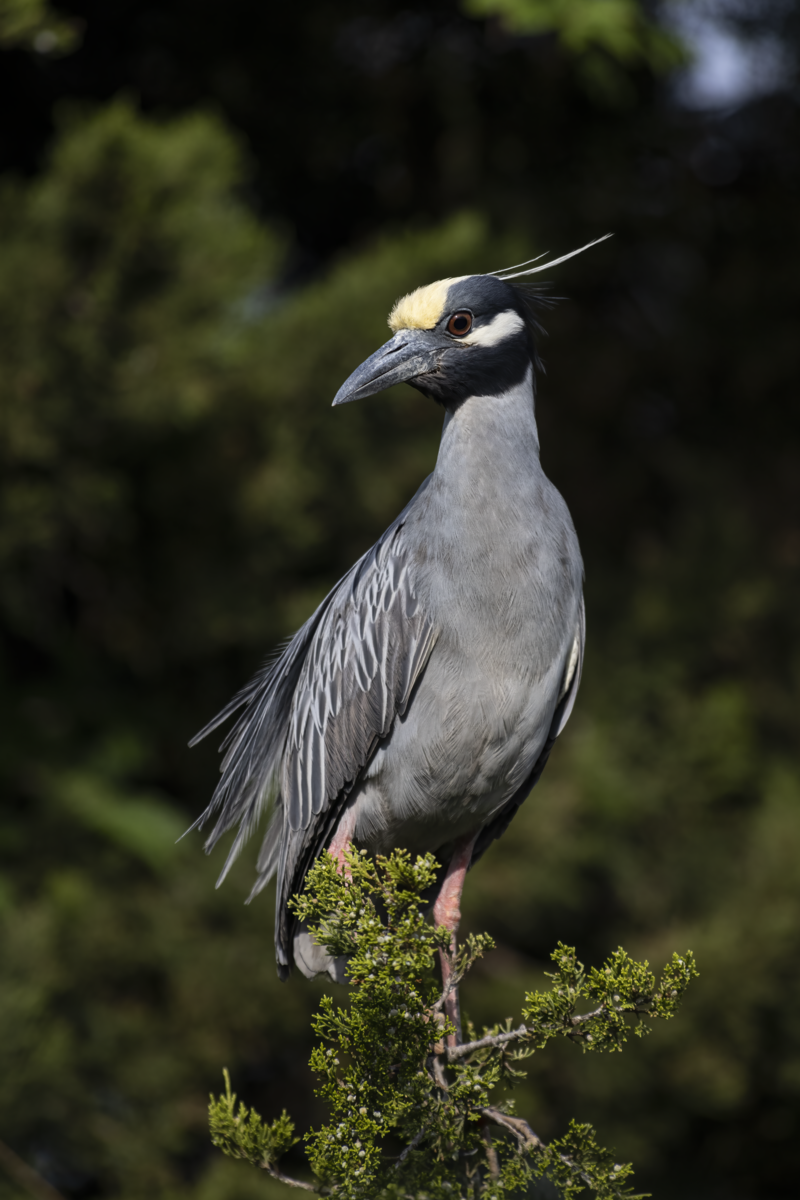
The Yellow-crowned night heron is a beautiful and unique species of bird native to the Americas. It has distinctive yellow crowns on its head, making it easy to identify among other herons.
These birds are also larger than most other types of herons, reaching up to 70 cm in length and 850 g in weight.
They usually feed on small fish or crustaceans while wading through shallow waters with their long legs.
The yellow-crowned night heron can be found near marshes or lakes during breeding season when they will build nests made from twigs high above the ground for protection against predators like raccoons and foxes.
This majestic bird is an important part of wetland ecosystems as it helps keep populations of smaller aquatic animals balanced by preying upon them.Scientific classification:
| Kingdom | Animalia |
| Phylum | Chordata |
| Class | Aves |
| Order | Pelecaniformes |
| Family | Ardeidae |
| Genus | Nyctanassa |
| Species | N. violacea |
Also Featured In: Bermuda birds, Common Central Park Birds
17. American Purple Gallinule
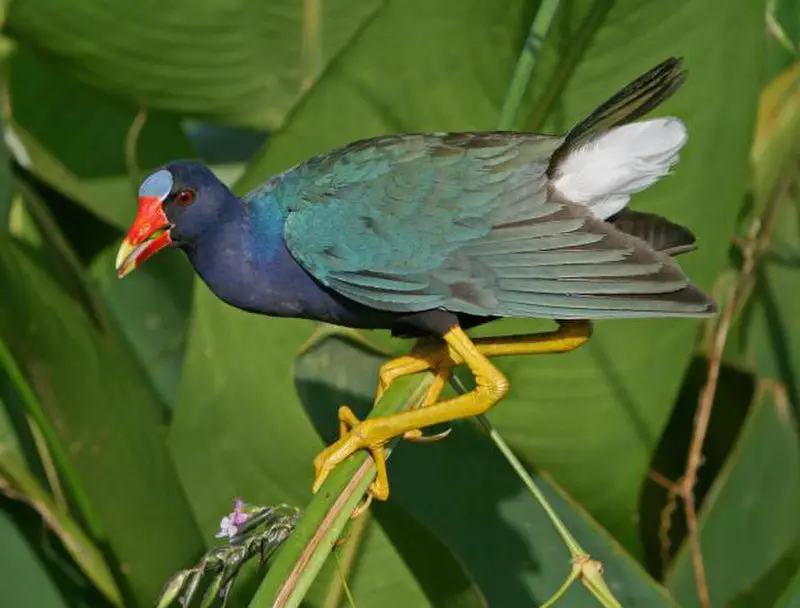
The American purple gallinule is a stunning bird found in North and South America. This species belongs to the order Gruiformes, which contains cranes, rails and crakes.
The family Rallidae classifies it as a rail species with its scientific name being Porphyrio martinica.
It is also known locally as the yellow-legged gallinule due to its striking plumage of greenish blue feathers on wings, back and tail along with bright red legs and bill.
Its environment includes freshwater marshes, swamps or paddy fields where these birds feed mostly on plants like water lilies or small invertebrates such as insects or molluscs.
These beautiful creatures are threatened by habitat destruction especially for agricultural purposes but conservation efforts are helping them survive despite this threat.Scientific classification:
| Kingdom | Animalia |
| Phylum | Chordata |
| Class | Aves |
| Order | Gruiformes |
| Family | Rallidae |
| Genus | Porphyrio |
| Species | P. martinicus |
Also Featured In: Florida Birds, Blue Birds You’ll Found around Us
18. Willet
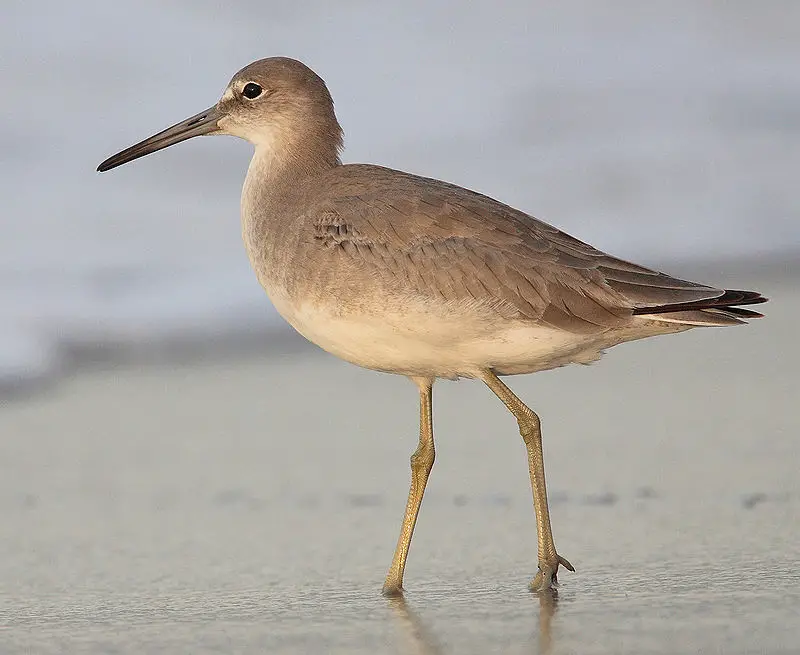
The Willet is a large and robust bird of the Scolopacidae family. It belongs to genus Tringa and it is much larger than its closest relative – lesser yellowlegs, which can be easily distinguished by its fine neck pattern.
The willet has brown upperparts with white patches on wings along with grey underparts. Its bill is thick, long and straight in shape having black coloration at tip while legs are also long but greenish-grey in colour.
They feed mainly on insects, worms or crustaceans that they find near coastal waters or wetlands as well as grains or seeds when available during winters.Scientific classification:
| Kingdom | Animalia |
| Phylum | Chordata |
| Class | Aves |
| Order | Charadriiformes |
| Family | Scolopacidae |
| Genus | Tringa |
| Species | T. semipalmata |
Also Featured In: birds of Delaware, Birds that can be Seen in Outer Banks
19. Brown Pelican
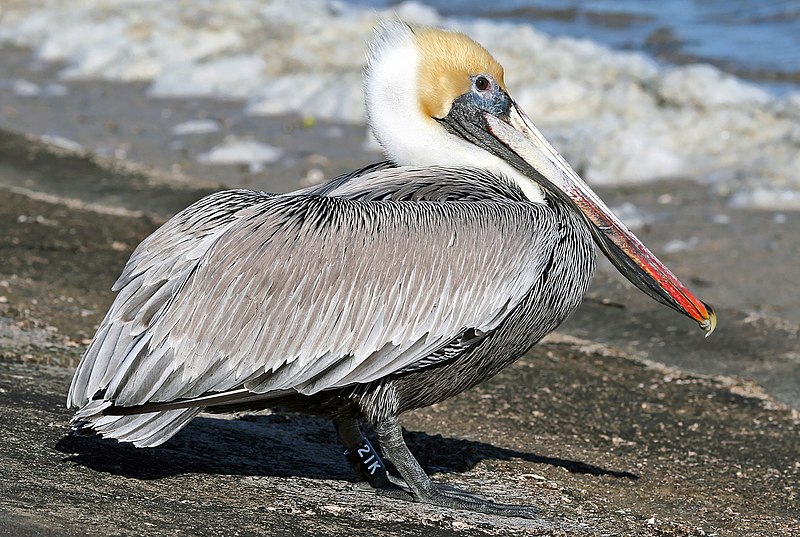
The majestic brown pelican is a dive-feeding bird that belongs to the pelican family. It is one of the three pelican species found in the Americas and is known to dive into water to catch its prey.
From the Atlantic Coast of New Jersey to the mouth of the Amazon River, and along the Pacific Coast from British Columbia to northern Chile, including the Galapagos Islands, this bird can be found.
Its scientific name is Pelecanus occidentalis, and it has a colored brown plumage, which is its distinct characteristic.
The brown pelican belongs to the largest bird species that exist today, with a wingspan that can stretch up to seven feet long.
This bird helps maintain a balance in the ecosystem by eating smaller fish, crustaceans, and other aquatic prey.Scientific classification:
| Kingdom | Animalia |
| Phylum | Chordata |
| Class | Aves |
| Order | Pelecaniformes |
| Family | Pelecanidae |
| Genus | Pelecanus |
| Species | P. occidentalis |
Also Featured In: Birds You’ll Find in the Sea, Water Birds Live around Us
20. Anhinga
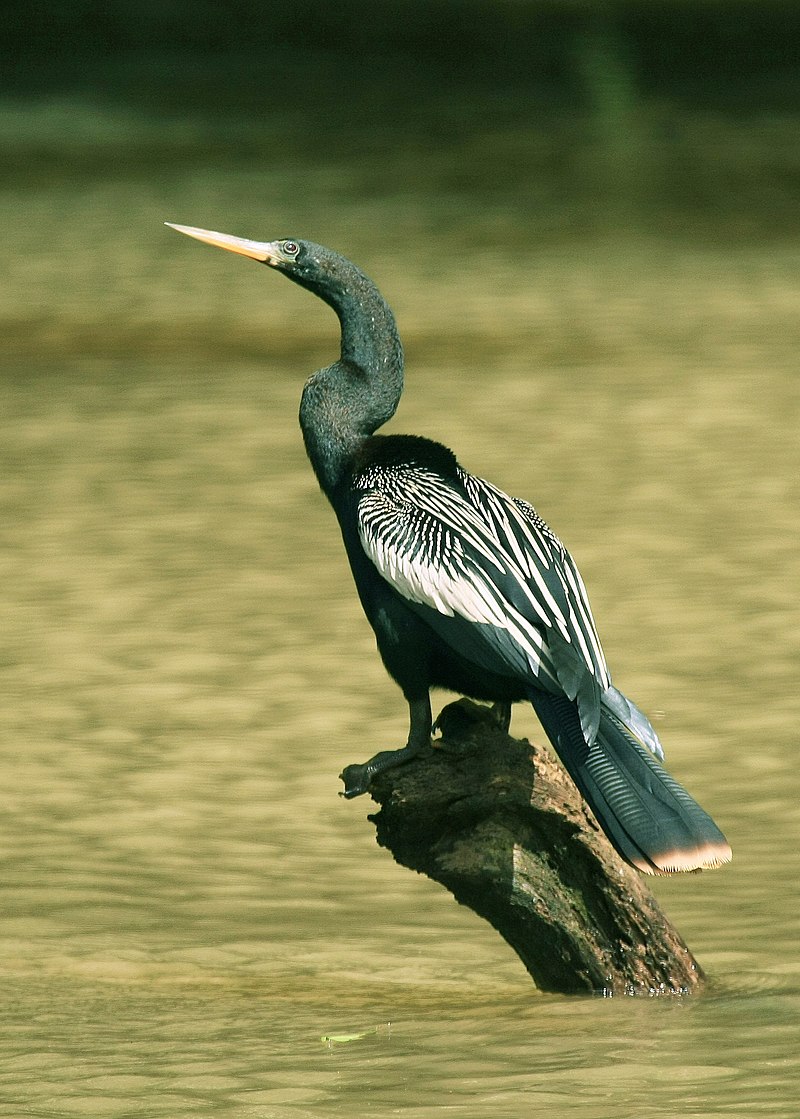
The Anhinga is a water bird found in the warmer parts of the Americas. It is sometimes called the snakebird, American darter, or water turkey.
The bird’s name comes from the Brazilian Tupi language and means “devil bird” or “snake bird.” When swimming, only the Anhinga’s neck appears above water, giving the appearance of a ready-to-strike snake.
It is a skilled swimmer and hunter, using its sharp beak to catch fish underwater. The Anhinga is easily recognizable by its long neck, sharp beak, and distinctive coloring of black and white feathers.
Its ability to dry its wings quickly after diving is unique among water birds, as it lacks the natural oils that make feathers waterproof.
The Anhinga is an important member of its ecosystem, helping to control fish populations and serving as prey for larger predators.Scientific classification:
| Kingdom | Animalia |
| Phylum | Chordata |
| Class | Aves |
| Order | Suliformes |
| Family | Anhingidae |
| Genus | Anhinga |
| Species | A. anhinga |
Also Featured In: Everglades Birds, Birds that Live around Central Florida
21. Northern Flicker
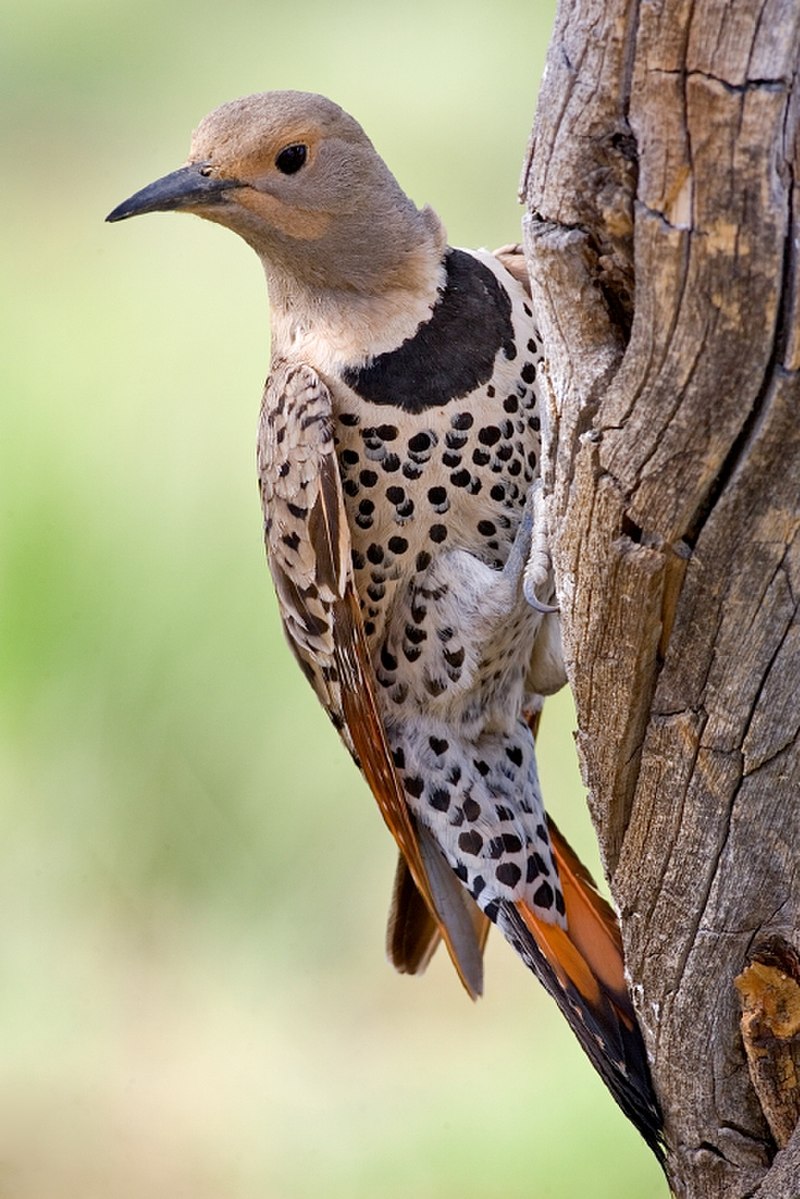
The Northern flicker is a woodpecker species found in North America, Central America, Cuba, and the Cayman Islands. This medium-sized bird is known for its unique migration behavior.
Over 100 common names are used to refer to the Northern flicker, one of them being “yellowhammer”. It is a beautiful bird with distinctive markings and a colorful plumage.
The Northern flicker is an important species in its ecosystem and plays a key role in maintaining a healthy balance in the environment.
Despite being a woodpecker, the Northern flicker has a diverse diet that includes insects, fruits, and seeds.
It is fascinating to observe this bird as it pecks at trees in search of food, communicates with its unique vocalizations and performs its incredible aerial displays.
The Northern flicker is truly a remarkable bird species that is worthy of our admiration and protection.Scientific classification:
| Kingdom | Animalia |
| Phylum | Chordata |
| Class | Aves |
| Order | Piciformes |
| Family | Picidae |
| Genus | Colaptes |
| Species | C. auratus |
Also Featured In: Birds That Live in Colorado, Birds Commonly Found in New York
22. Egret
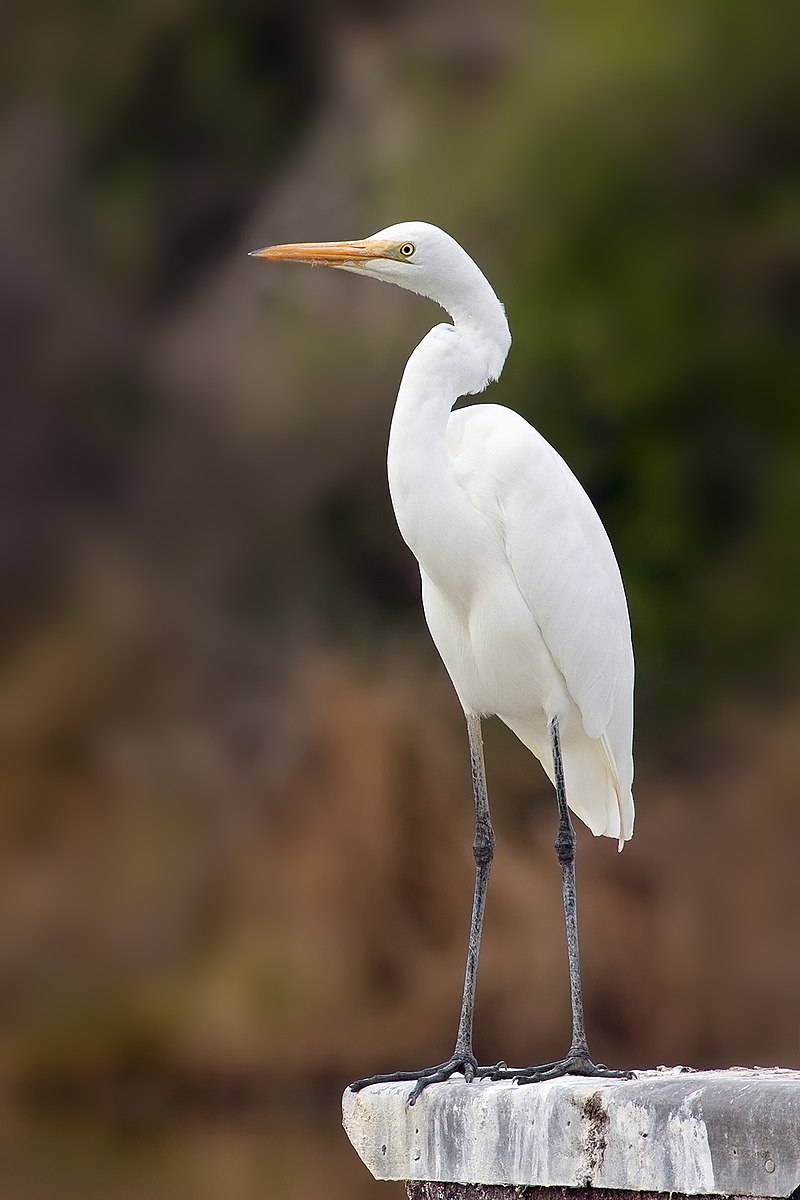
Egrets are wading birds that share the same build as herons, making them indistinguishable biologically. They are known for their long legs and white or buff plumage.
During the breeding season, egrets develop fine plumes, usually milky white in color. Many members of the Egretta or Ardea genera are classified as egrets or herons.
Egrets are typically known for their graceful movements and their ability to wade into shallow water to fish.
They are commonly found near bodies of water such as lakes, rivers, and marshes. Egrets are a symbol of purity and elegance and are often depicted in art as a result.
Overall, the egret is a fascinating bird that is both beautiful and functional in its environment.Scientific classification:
| Kingdom | Animalia |
| Phylum | Chordata |
| Class | Aves |
| Order | Pelecaniformes |
| Family | Ardeidae |
| Subfamily | Ardeinae |
Also Featured In: Cedar Key Birds You Need To Know, Birds That Live In Gasparilla Island